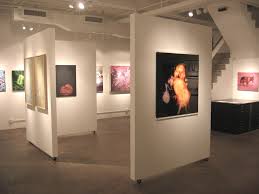The Gallery Walk
I often wonder who came up with the idea of a “museum.” You know, where you walk from artwork to artwork around a room, looking at the pieces, reading the placard, absorbing the ambiance. Getting tired “museum feet.”
I remember being dragged through art museums as a kid thinking it was the most boring thing in the world. When I really drill down into why I found it so tedious, I realize that it probably has something to do with the lack of interactivity in those endless white walls of art. Because now, when I drag my kids to a museum, there always seems to be some fun activity book to go along with the exhibits: scavenger hunts, blank pages to copy artworks, questions to answer. Someone figured out that simply looking at the art wasn’t quite engaging enough for the average viewer like me.
You may therefore find it surprising that one of my favorite brainstorming activities is called “A Gallery Walk.” The reason I love this activity, however, is because it is not only about VIEWING the gallery (yawn), but is also about CREATING it along the way (fun!).
Here’s how it works:
1. Generate a list of questions or categories that you want your group to brainstorm ideas for. For example, if you are planning to host a school carnival, your categories might be:
- Food
- Entertainment
- Activities for children ages 0-5
- Activities for children ages 6-10
Or, if you want your group to think about, say, making your organization a more “friendly” place for your clients, your categories might be questions like:
- How is our building welcoming to people?
- How do we show our clients that we care?
- What is one thing you’ve seen a colleague do to make someone feel comfortable here?
2. Once you have your list of 3-7 questions or categories, write each one at the top of a large sheet of chart paper, leaving a large blank space under this title. Hang these papers on the walls around the room, like a gallery.
3. Divide your group into pairs, triads, or small groups. There should be the same number of groups as there are papers on the wall. Give each group a marker and give them time to brainstorm on one of the papers, writing down their ideas in response to the question or category at the top of the paper.
4. After a few minutes, invite the groups to rotate to the next paper. Now they can read what the previous group wrote before adding their own responses to the brainstorm.
5. Continue until each group has had a chance to visit each poster.
6. At the end of this brainstorming session, I now like to ask participants to do any/all of the following:
- Return to your original poster, read all of the ideas, and circle your favorite. Be prepared to share this idea out with the rest of the group along with why this idea was your favorite.
- Walk around to view all of the posters and put a star by any ideas on any of the posters that jump out at you. Once this has been done, note if certain ideas got a lot of stars. Why do people think that is?
- Walk around to all of the posters to read them. Now find a partner and discuss any themes or trends you notice across posters.
- Read all of the posters and be prepared to ask a question about something you see, maybe something you don’t understand, or something that begs more information.
7. After a group has done a gallery walk, I always type up the ideas and add them to our notes. Often, I will bring them back to our subsequent gathering and use them for another activity, like to form committees for the carnival in the first example above. There are many uses for ideas generated in a brainstorm like this. I’d love to hear how you use “A Gallery Walk.”
Of course, it goes without saying that this type of brainstorming gets right at the heart of transformational facilitation because it really does generate full participation from everyone. If I just put up a chart paper in the front of the room and start asking people to brainstorm ideas for our school carnival, I will not get nearly the excitement and richness of response that I get when people are walking around the room writing their thoughts down in our gallery. And it begs interaction after the sheets have been filled in ways that are both thought-provoking and leaning towards action.
If you haven’t tried doing a Gallery Walk before, try it! I think you will see how much more energy this generates when it’s time to brainstorm. And if someone complains of “museum feet,” by all means, let them pull up a chair to each paper!
